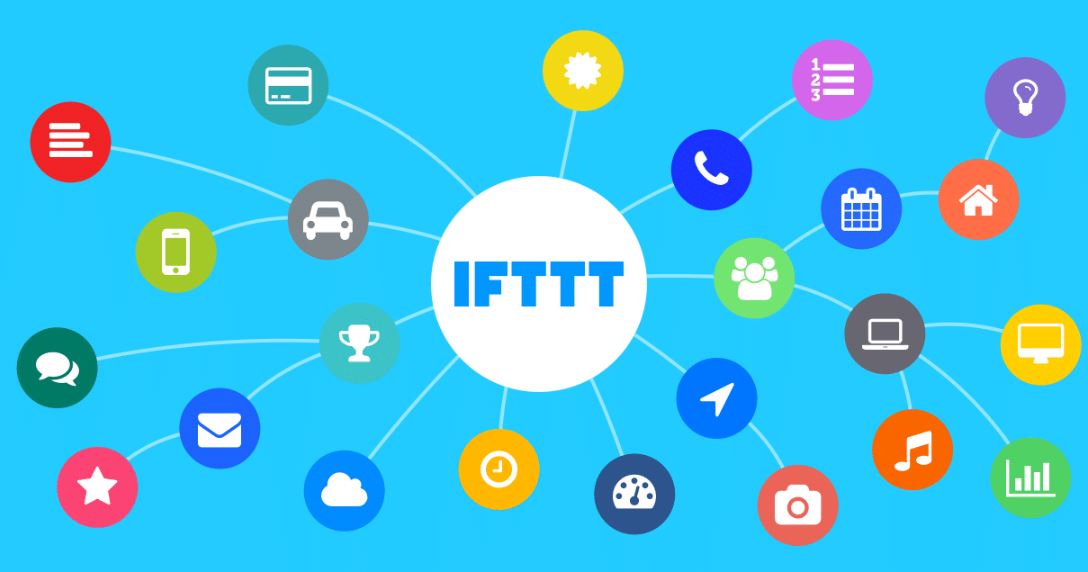IFTTT Automating Your Digital Life Made Easy
11th November 2024
Diane Marley
Are you seeking relief from the monotony of repetitive tasks across your devices and applications? Consider utilizing IFTTT, a robust tool designed to streamline automation within your digital ecosystem.
Delve into the functionality of IFTTT, including an examination of its most widely-used applets, potential applications, and instructions for initiating use. Additionally, explore alternative options to IFTTT for a broader range of choices. Let us proceed with exploring this tool further.
What Is IFTTT?
IFTTT, an acronym for 'If This Then That,' represents a pioneering automation platform that simplifies the process of linking different web services and smart devices to automate diverse facets of individuals' digital routines.
By leveraging IFTTT, users can construct tailored workflows by establishing triggers, which serve as the incipient points, and delineating specific actions to execute upon the activation of those triggers. These triggers encompass a wide spectrum, ranging from receiving an email to updating a spreadsheet or regulating the temperature within one's residence. Applets assume a pivotal role in this procedure, functioning as the preconfigured conduits between assorted applications and devices. This functionality give the power tos users to seamlessly amalgamate tools such as social media platforms, smart home devices, and productivity applications to optimize the efficiency of their daily digital responsibilities.
How Does IFTTT Work?
The functionality of IFTTT is based on a simple programming logic in which user-defined 'triggers' prompt specific 'actions,' resulting in an automated workflow that enhances productivity and efficiency.
Users have the capability to establish triggers, such as receiving an email containing a particular keyword or a change in weather conditions, which will then initiate actions like automatically storing email attachments in Google Drive or adjusting the temperature in their smart home. These triggers and actions can be customized to align with individual preferences, enabling users to tailor their automation to meet their specific requirements.
For example, a user may configure a trigger to automatically share a photo on Twitter or Facebook when they post it on Instagram. This level of customization provides personalized and time-saving advantages for a range of tasks.
What Are Applets and How Do They Work?
Applets serve as the fundamental components of IFTTT, enabling users to seamlessly integrate and automate a variety of web services and connected devices across diverse platforms. This integration facilitates the simplification and optimization of their digital workflows.
What Are the Most Popular Applets?
Some of the most popular applets available encompass functions that automate social media posts, synchronize calendar events with email notifications, and facilitate the control of smart home devices through voice commands.
These applets serve not only to simplify tasks but also to boost productivity by rationalizing various processes. For instance, platforms like 'IFTTT' provide users with the ability to customize automations known as 'recipes', which interlink different applications and devices to enable seamless integration and task automation.
Another user-friendly applet, 'Todoist', aids individuals in efficiently managing their tasks by synchronizing tasks across multiple devices and platforms. Such applets offer both convenience and efficiency, establishing themselves as critical tools in the contemporary digital landscape.
What Are the Benefits of Using IFTTT?
The utilization of IFTTT presents a myriad of advantages, encompassing heightened productivity and efficiency, along with the capacity to tailor and mechanize diverse digital tasks. Consequently, it stands as an invaluable instrument for optimizing routine operations.
1. Saves Time and Effort
By streamlining mundane tasks through automation, IFTTT facilitates a considerable saving of time and effort, enabling users to redirect their focus towards more substantial endeavors, thereby enhancing overall time management.
For instance, IFTTT can seamlessly synchronize your calendar with your task list, ensuring punctuality with all essential deadlines. It can also automatically archive email attachments to your cloud storage or adjust your smart lighting as daylight wanes. These automated processes not only streamline daily routines but also foster heightened productivity and efficacy. With IFTTT assuming responsibility for repetitive duties, individuals can channel their efforts towards endeavors demanding creativity, critical analysis, and decision-making, culminating in a more efficient and successful day.
2. Increases Productivity
IFTTT enhances productivity by establishing streamlined workflows that automate repetitive tasks, enabling users to operate more efficiently and accomplish their objectives more swiftly.
Through the integration of diverse applications and devices, IFTTT facilitates the seamless synchronization of users' digital environment. For example, configuring an applet that automatically archives email attachments to a specified cloud storage folder aids in file organization without necessitating manual intervention.
By amalgamating calendar applications with task management tools, users can rationalize scheduling and effectively prioritize tasks. This automation not only conserves time but also diminishes the likelihood of overlooking crucial deadlines, thereby elevating overall productivity.
3. Streamlines Processes
IFTTT optimizes operations through the integration of diverse web services and interconnected devices, establishing seamless workflows that reduce interruptions and improve overall productivity. This linkage of various platforms and devices via IFTTT eradicates the necessity for manual involvement in everyday tasks, consequently saving valuable time and energy.
For example, configuring an applet to autonomously deactivate smart lights upon exiting the residence not only supports energy preservation but also provides a sense of reassurance. This interwoven system of automated actions simplifies intricate routines and fosters a structured lifestyle, thereby facilitating the handling of day-to-day tasks and enhancing the overall quality of life.
4. Integrates Different Apps and Devices
One of the primary advantages of IFTTT is its capability to integrate various applications and devices, thereby improving connectivity and enabling more seamless and automated digital experiences.
By facilitating the seamless linkage of diverse services and devices, IFTTT simplifies daily routines and boosts productivity. For example, users have the ability to establish triggers that automatically turn on smart lighting once their phone connects to their home Wi-Fi network, thereby creating a welcoming atmosphere upon their arrival.
Another beneficial integration involves syncing one's calendar with a to-do list application to receive timely reminders and enhance schedule management. These integrations not only save time but also streamline tasks by ensuring that activities within one application prompt corresponding actions in another, fostering a harmonious digital ecosystem.
What Are the Potential Uses of IFTTT?
The potential applications of IFTTT are extensive, encompassing diverse areas including home automation, social media management, personal organization, and fitness tracking, collectively contributing to a cohesive digital transformation.
1. Home Automation
IFTTT plays a pivotal role in the realm of home automation by facilitating the connection of various IoT devices and smart home systems. This enables users to effortlessly manage their residences through automated tasks and voice commands.
For example, a homeowner has the capability to establish a routine wherein the lights are automatically activated upon their arrival, the thermostat adjusts to their desired temperature, and their preferred music commences playing as they enter the premises. By leveraging the integration of devices like smart lights, thermostats, security cameras, and voice assistants, activities such as temperature regulation, security surveillance, and even preparation of morning beverages can be efficiently streamlined through a mere voice directive.
2. Social Media Management
IFTTT streamlines social media management by enabling users to automate the scheduling of posts, sharing of content, and synchronization of notifications across various platforms.
For instance, users have the option to generate an applet that will automatically share their Instagram photos on Twitter as native images, thereby eliminating the need to manually distribute them. Alternatively, another beneficial applet could be configured to synchronize notifications between a Gmail account and Slack, guaranteeing that crucial emails are promptly received and not lost in the midst of other messages. Through the utilization of such automation features provided by IFTTT, users can save precious time, enhance the efficiency of their social media tasks, and achieve superior organization.
3. Personal Organization
IFTTT plays a pivotal role in enhancing personal organization through the automation of calendar updates, task scheduling, and notification systems. This functionality ensures that users can effectively manage their commitments and deadlines.
Users can leverage IFTTT's platform by configuring specific 'applets' to seamlessly integrate their diverse digital tools, thereby establishing a unified organizational framework. For instance, users have the capability to create an applet that automatically syncs events from their email to their Google Calendar, thereby minimizing the risk of overlooking crucial dates.
Moreover, users can establish applets to receive timely reminders for impending tasks or deadlines, facilitating efficient time management and prioritization. These automated processes not only optimize time utilization but also alleviate the cognitive burden associated with the constant need to remember and manually update disparate schedules and tasks.
4. Fitness Tracking
IFTTT facilitates fitness tracking by connecting smart devices and fitness apps, enabling seamless data sharing and real-time monitoring of health metrics.
For instance, users have the capability to create applets that automatically record their daily steps from a fitness tracker to a Google Sheets document, streamlining the process of tracking and analyzing this data. Additionally, another valuable applet could involve synchronizing calorie intake data from a food diary app to a smart scale, providing users with a comprehensive overview of their health-related habits.
Through the utilization of IFTTT for fitness tracking purposes, individuals can capitalize on the convenience offered by automated data collection. This not only aids in monitoring progress and establishing goals but also contributes to enhancing overall health and well-being.
How to Get Started with IFTTT?
Initiating the utilization of IFTTT is a streamlined and convenient procedure that entails the establishment of an account, perusing and enabling pre-existing applets, and ultimately, crafting personalized applets to cater to individual requirements.
1. Create an Account
To initiate the use of IFTTT, the initial step involves creating an account on the platform. This account grants users control over the activation and customization of applets.
Upon visiting the IFTTT website or downloading the mobile application, individuals can readily register by providing their email address or opting for a prompt social media login. The registration process is uncomplicated, necessitating fundamental information for account establishment. Following logging in, users possess the versatility to oversee and tailor their applets to align with their preferences and requirements.
New users can derive value from exploring the assortment of applet options accessible and engaging in experimentation with diverse configurations to enhance their engagement with IFTTT.
2. Browse and Activate Applets
Upon creating an account, users are granted access to a diverse array of pre-built applets, which they can conveniently browse through and activate based on their preferences and requirements.
To navigate the IFTTT platform and discover applets that cater to specific interests, users can utilize the search functionality by inputting keywords associated with their desired tasks or services. Additionally, users have the option to explore curated collections and popular applets to identify solutions that align with their needs.
When choosing an applet, users are advised to evaluate its functionality and relevance to their daily routines. Upon identifying a suitable applet, the activation process is seamless due to the intuitive interface that provides clear instructions and prompts, thus ensuring an efficient and user-friendly experience.
3. Create Your Own Applets
The creation of personalized applets on IFTTT offers a wide range of customization options, give the power toing users to define specific triggers and actions to align with their individual requirements and preferences.
By thoughtfully selecting trigger channels such as weather updates or social media notifications, users can craft applets that respond in real-time to incoming data. The development of custom applets involves the establishment of conditions that, upon fulfillment, activate the designated actions.
For example, a scenario of personal automation may involve configuring an applet to notify the user via a text message whenever a defined keyword is detected within a tweet. The adaptability of custom applets also extends to interconnected devices, where a single trigger can prompt multiple actions simultaneously, enriching the overall automation experience.
What Are the Alternatives to IFTTT?
Although IFTTT stands as a popular automation platform, there exist several alternatives that provide a range of integration options and capabilities for automating diverse digital tasks.
1. Zapier
Zapier is a robust automation platform designed to enhance task management efficiency by linking various web applications and automating workflows. This platform offers a diverse range of features and functionalities that render it a versatile tool for enhancing productivity and operational effectiveness.
In contrast to IFTTT, Zapier enables the execution of more intricate automation sequences that involve multiple steps, conditions, and triggers. Zapier particularly excels in situations where complex workflows necessitate seamless integration and execution across multiple applications.
Supporting a wide array of tasks and integrations, ranging from social media management and email marketing to CRM systems and e-commerce platforms, Zapier emerges as a valuable resource for individuals and businesses seeking to optimize their operational processes.
2. Microsoft Flow
Power Automate, formerly known as Microsoft Flow, stands as a robust tool for workflow automation that seamlessly integrates with Microsoft Office 365 and various other cloud-based services.
Featuring a user-friendly interface, Power Automate give the power tos users to establish automated workflows connecting diverse apps and services without necessitating extensive coding proficiency. This automation solution presents an array of pre-designed templates to facilitate the setup of workflows.
Notably, Power Automate boasts deep integration with Microsoft's suite of products including Outlook, SharePoint, and Teams, enabling users to streamline their activities and enhance productivity across multiple applications. In comparison to IFTTT, Power Automate offers more intricate automation functionalities, rendering it apt for personal productivity enhancements as well as robust business process automation.
3. Stringify
Stringify represents an advanced automation platform specifically crafted for the development of intricate automation rules for smart home devices and various connected services.
A distinctive feature that distinguishes Stringify from other automation tools such as IFTTT is its capacity to generate more intricate and tailored automation rules. Through the utilization of Stringify, individuals can establish sequences of actions involving multiple devices and services, thereby facilitating the creation of highly personalized automated workflows. This heightened level of specificity enables users to exercise more precise and nuanced control over smart home devices, rendering it particularly appealing to individuals in pursuit of elevated levels of customization and automation within their home environment. Additionally, Stringify extends support to a broader spectrum of devices and integrations, affording users a more extensive and comprehensive automation experience.
4. Workflow
The integration of Workflow into Apple's Shortcuts app has enhanced the user experience by providing a versatile automation tool for creating customizable solutions to automate tasks on mobile devices.
Through the utilization of Workflow, users are able to optimize their daily processes by establishing sequences of actions that can be triggered either manually or automatically, based on specific triggers. The app boasts an extensive array of pre-built actions that can be creatively combined to meet individual requirements.
Workflow distinguishes itself through its user-friendly drag-and-drop interface, catering to novices while also offering advanced functionalities for proficient users. In contrast to IFTTT, Workflow adopts a more visual approach to automation, enabling users to visualize the sequence of actions. This high level of customization and visual representation renders Workflow particularly advantageous for mobile users seeking to streamline tasks and enhance efficiency.















